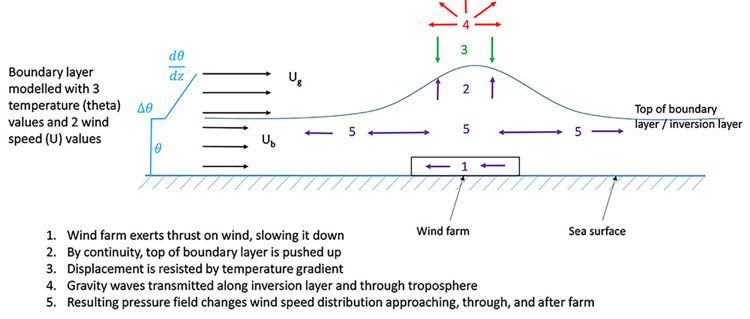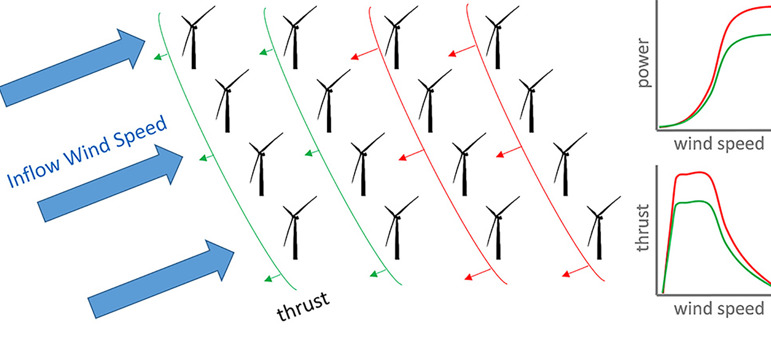Frazer-Nash’s Brian Gribben discusses the findings of recent research which explored how more energy might be extracted from offshore wind farms.
Standing in the middle of the North Sea, the huge Ekofisk complex has produced oil and gas for fifty years. Much less well known is that meteorologists have been faithfully sending up weather balloons from Ekofisk twice a day since 1994. These high quality atmospheric observations have been used by Frazer-Nash in a recent project to demonstrate how more energy can be extracted from offshore wind farms.
The interaction of a wind farm with the atmospheric boundary layer can be modelled using quite simple models, as shown in the figure below. This model can be driven by any combination of wind speeds and air temperatures, and the predicted interaction effects can be eye-catching. However, if we are to take notice of these interaction effects, it’s important that the conditions selected represent the real conditions experienced by offshore wind farms. Data from weather stations is not hard to find, but most is from onshore sites and much of that at near surface level – here we are interested in measurements up to several kilometres of altitude, and far out to sea. Fortunately, the unique Ekofisk dataset fits the bill.

Statistical analysis of the meteorological data from Ekofisk allowed an understanding of the conditions that actually occur most often in reality to be established. This was then used as an input to an existing fluid mechanics model of the atmosphere, which was newly coupled to an industry-standard wind farm performance model. The models indicate that the effect of atmospheric interaction is to reduce output from a large wind farm by 2% to 3% in one set of typical conditions.
What can we do to reduce these losses? The answer may lie in ‘wind farm control’. Offshore wind farms have very simple control concepts – the wind turbines are ‘greedy’. Every wind turbine tries to extract as much energy as it can. In recent times new approaches are being considered, to modify the greediness of individual turbines so that more energy can be generated overall. Modelling interaction effects brings new opportunities to attempt this. Put simply, if we dial down the greediness of some turbines, say at the front of the farm, then the upwards thrust on the atmosphere will be less, exciting lesser gravity waves, and perhaps having an overall energy benefit. Using this approach, significant mitigation of gravity wave losses has been demonstrated in large wind farm simulations.

The project was funded by Innovate UK/SBRI’s Sustainable Innovation Fund, and ran from October to December 2020. The Sustainable Innovation Fund has awarded £134 million shared between over 1000 companies across the UK, to allow organisations to develop ground-breaking ‘green innovations’ that have sustainability at their heart. Each successful company will receive up to £175,000 to accelerate commercial production of their innovative products and services. Read the announcement at https://www.gov.uk/government/news/134-million-boost-to-help-uk-businesses-build-back-greener.
The project was also supported by SSE Renewables, a renewable energy subsidiary of SSE plc, which was of great assistance in defining objectives and generating insights. Progress continues on further developing, validating and applying these models.
Frazer-Nash is pleased to now add the estimation of gravity wave losses – and development of mitigation strategies – alongside its existing services to the offshore wind industry, which include wind resource assessment, blockage effects estimation, and wind farm control.






